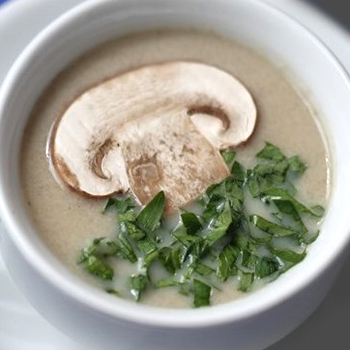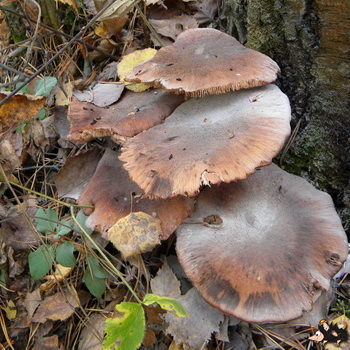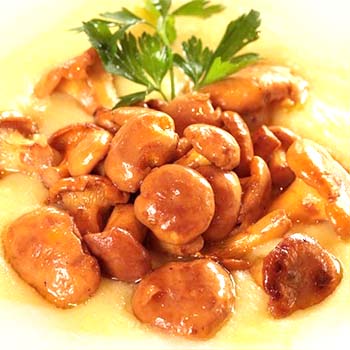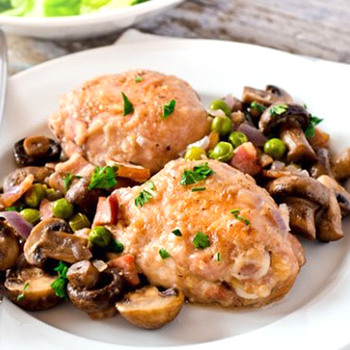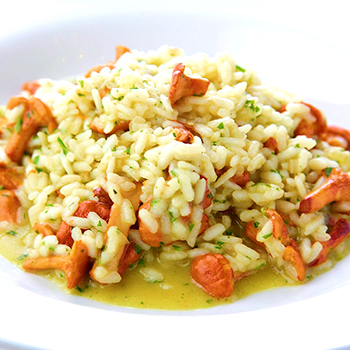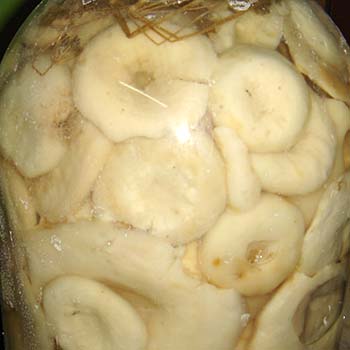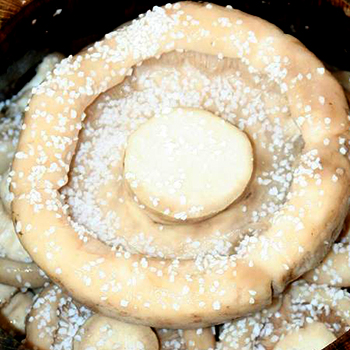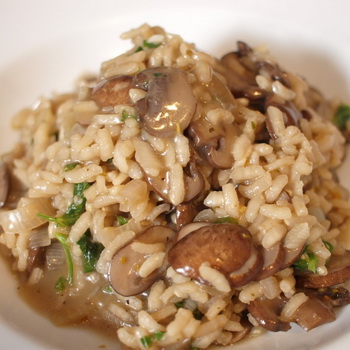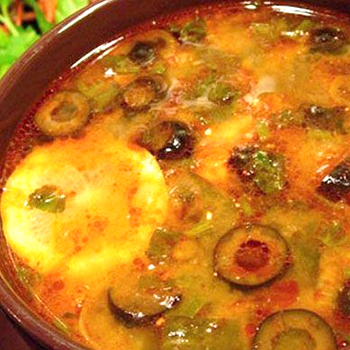Varieties of autumn mushrooms: photos, videos, description of edible mushrooms, when they appear and how they grow
 Every autumn, lovers of “quiet hunting” go to the forest to combine “useful with pleasant”. Along with walking in the fresh air and admiring the bright autumn colors, it is always possible to collect a good harvest of fruit bodies. It is with the onset of falling leaves that autumn mushrooms appear, which are very much appreciated for their attractive taste and versatility in cooking. Many housewives always stock up on delicious canned mushrooms for the winter, and also prepare various dishes for breakfast, lunch and dinner.
Every autumn, lovers of “quiet hunting” go to the forest to combine “useful with pleasant”. Along with walking in the fresh air and admiring the bright autumn colors, it is always possible to collect a good harvest of fruit bodies. It is with the onset of falling leaves that autumn mushrooms appear, which are very much appreciated for their attractive taste and versatility in cooking. Many housewives always stock up on delicious canned mushrooms for the winter, and also prepare various dishes for breakfast, lunch and dinner.
The well-known autumn mushrooms of honey agaric are not one, but a set of species, of which there are more than 40 in the world. On the territory of the Russian Federation, about 10 types of these fruit bodies can be noted, but such information will be of interest only to scientists, which cannot be said about mushroom pickers. The latter are concerned only with how to distinguish edible honey from false. And only the most advanced mushroom pickers can notice that the edible species of autumn mushrooms differ among themselves. Sometimes these differences are so insignificant that specialists have to check the disputes of two different types of honey agaric for interbreeding ...
Our article provides photos and descriptions of edible autumn mushrooms. After reviewing the information provided, you can have an idea of the appearance of these fruit bodies, the places of their growth, as well as the fruiting season. We have selected the types of the most common autumn mushrooms in Russia, which are the most popular among mushroom pickers.
Autumn honey fungus (real or hemp)
Autumn or real honey fungus is the most famous among all representatives of its genus. This is a delicious edible mushroom that lends itself well to various processing processes: pickling, salting, freezing, drying, frying, etc.
Latin name:Armillaria mellea.
Family: Physalacriaceae (Physalacriaceae).
Synonyms: real honey fungus, autumnal.
Hat: reaches a diameter of 4-12 cm (sometimes up to 15 and even 17 cm), initially convex, and then opens and becomes flat, forming wavy edges. Sometimes in the center of the cap you can observe a tubercle, specks or small brown scales. Skin color ranges from beige to honey-brown to gray-brown. The photo below shows an autumn mushroom:


Please note that at a young age, the surface of the cap of the fruiting body is covered with rare white scales, which disappear with age.
Leg: thin, fibrous, up to 10 cm high and 1-2 cm thick, slightly widened at the base. The surface is light or yellow-brown in color, and a darker shade is observed at the bottom. Like the cap, the stem is covered with small light scales. Often, autumn mushrooms grow together with their legs at the base.
Pulp: in young specimens it is dense, white, pleasant in taste and smell. With age, it becomes thin, acquiring a rough consistency.
Plates: rare, adherent to the stem or weakly descending. Young mushrooms have white or cream colored plates, which darken with age and become covered with brown spots. In addition, the plates are covered with a film, which in old fruiting bodies breaks off from the cap, hanging on the stem like a ring.
Application: widely used in cooking and medicine. The mushroom is perfectly marinated, salted, dried and frozen. Delicious first and second courses are made from it, which are not inferior in taste even to porcini mushrooms and camelina. In addition, all varieties of autumn mushrooms have pronounced medicinal properties.
Edibility: edible mushroom category 3.
Similarities and differences: autumn can be confused with fleecy scaly.However, the latter differs from the present honey fungus by the increased number of scales on the surface of the fruiting body, as well as by a pungent odor resembling a radish. And although the flake also belongs to edible mushrooms (only after heat treatment), it is still not as tasty as the autumn one.
Spreading: from the subtropics to the North, it does not grow only in the permafrost zone. They are found in damp deciduous forests: on stumps, fallen trees and branches. Most often it is a parasite, affecting more than 200 species of trees and shrubs, less often they act as saprophytes, settling on already dead wood. Deforestation of coniferous forests is also not avoided.
Interestingly, autumn mushrooms are also called hemp. This is logical, because they mostly prefer to grow on stumps. It should be noted that the color of the fruiting body will depend on the type of wood on which it has settled. So, poplar, acacia or mulberry give honey-yellow tint to honey, oak - a brown tint, elderberry - a dark gray, and conifers - a brown-red tint.
What northern autumn mushrooms look like: photos and descriptions of legs and hats
The following photo and description belongs to northern autumn mushrooms - popular edible mushrooms of the Openok genus.
Latin name:Armillaria borealis.
Family: Physalacrylic.
Hat: Convex, 5-10 cm in diameter, yellow-brown or orange-brown, often olive-colored. In the center, the cap is lighter than the edges. The surface is covered with small scales, which are 1-2 shades darker than the main color. The largest accumulation of scales is observed precisely in the center of the cap. The edges are slightly ribbed and rough, of a dirty dark yellow color.
Leg: cylindrical, thin, sometimes widening at the base, up to 10 cm in height and up to 1.5 cm in thickness. The surface is dry, brownish with yellow-white pubescence. There is a skirt-ring, characteristic of all edible species, which becomes filmy with age, and felt scales are observed along the edges.
The photo shows what edible autumn mushrooms of this species look like:


Pulp: dense, white or beige, vaguely resembles pressed cotton wool. Possesses a pronounced pleasant "mushroom" taste and smell.
Plates: young specimens are white, becoming ocher-cream with age.
Edibility: edible mushroom.
Application: suitable for all types of culinary processing - boiling, frying, stewing, pickling, salting, drying and freezing. The leg of the autumn mushroom is tough, so it is not used for cooking. It is widely used in medicine to restore high blood pressure. In addition, the mushroom has a calming effect on the body, helps with radiation and the treatment of cancer.
Spreading: grows throughout the territory of Russia, with the exception of the Far North. It settles on deadwood, as well as stumps of coniferous and deciduous species. Fruiting is abundant, because the mushroom grows in large families. Most often it can be found on birch, alder and oak, sometimes it affects shrubs. The picking season starts in August and ends in September-October, depending on the weather.
We offer you to see a few more photos of edible autumn mushrooms:


Edible fat-legged mushrooms
Among edible autumn mushrooms, tolstopod honey honey is also common - one of the most popular mushrooms, which is successfully harvested not only in the forest, but also grown on an industrial scale.
Fatfoot honey fungus
Latin name:Armillaria lutea.
Family: Physalacrylic.
Synonyms: Armillaria Bulbosa, Inflata.
Hat: diameter is from 2.5 to 10 cm. At a young age, the mushroom has a wide-conical cap with turned-up edges, then it thickens and the edges fall, and a tubercle appears in the center. At first it has a dark brown color, turns yellow with age.On the surface there are numerous hairy yellowish-green or gray scales that persist even in adults.
Leg: cylindrical with a clavate thickening towards the base, covered with gray-yellow scales. The very surface of the leg is brown at the bottom and yellow (sometimes white) at the top. The "skirt" is white, filmy, which then breaks.
Edible autumn mushrooms are shown in the photo:


Pulp: dense, white, with a pleasant, sometimes cheesy smell.
Plates: frequent, slightly descending, yellowish, turns brown with age.
Edibility: edible mushroom.
Similarities and differences: autumn honeydew can be confused with fleecy scaly, which is distinguished by a high content of scales on the surface of the cap. In addition, sometimes inexperienced mushroom pickers can confuse edible honey fungus with a poisonous sulfur-yellow false foam, as well as a conditionally edible brick-red false foam. However, the mentioned species lack the ring-skirt on the leg, which is characteristic of all edible fruit bodies.
Spreading: is a saprophyte and grows on rotting grass, rotting stumps and tree trunks. Also prefers burnt wood and deciduous trees. Grows one copy at a time, less often in small groups. In addition, this species of honey agaric can grow on a bed of spruce needles.
We also offer you to watch a video about autumn mushrooms:
How and in what forests do autumn mushrooms grow?
The time of autumn mushrooms depends on the climatic conditions of a particular territory, as well as on the established weather, which includes air temperature and humidity. Favorable weather conditions for abundant fruiting of mushrooms are considered to be the established average daily air temperature not lower than + 10 °. The very mention of the type of fruiting bodies suggests the idea of exactly when autumn mushrooms appear. So, mushroom growth begins at the end of August and ends in mid-October. In some individual regions, autumn mushrooms continue to bear fruit until the end of November, if the weather is warm. The peak harvest of fruiting bodies occurs mainly in September. Another plentiful wave of fruiting starts with the onset of the so-called "Indian summer". In addition, the honey fungus of autumn species grows actively during heavy rains and loves September fogs. As you know, autumn mushrooms grow very quickly, just a few days after a warm pouring rain are enough, and you can go for the next mushroom harvest.


Almost all types of autumn mushrooms grow in large groups on stumps, fallen trees, forest clearings, etc. In this regard, it is very convenient to collect them in the forest. For the most part, autumn mushrooms are parasites, settling on living trees and destroying them. However, there are also saprophytes that have taken a liking to the dead rotten wood. Sometimes they can be found under the bark of the affected plant.
In what forests do autumn mushrooms grow in Russia? Many experienced mushroom pickers note that these fruit bodies prefer moist deciduous forests. In addition, their abundant fruiting is observed in forest clearings. Most often, autumn mushrooms grow in mixed deciduous forests, preferring birch, alder, oak, aspen and poplar. Since the territory of Russia has a huge area with forests, you can meet honey mushrooms in any of them.
Where else do autumn mushrooms grow?
And where else do autumn mushrooms grow, on what trees? Often, these fruiting bodies can be found on conifers. However, it should be remembered that the color of the caps and even the taste of the mushroom can vary depending on the wood. So, growing on pine or spruce, honey mushrooms acquire a darker color and become slightly bitter in taste.
Interesting fact: at night, you can see a faint glow of the stump, on which honey agarics grow. Often this feature can be observed before a thunderstorm.The glow is emitted not by the fruiting bodies themselves, but by the mycelium. Those who find themselves near such a phenomenon at night agree that this is an incredibly beautiful sight!

